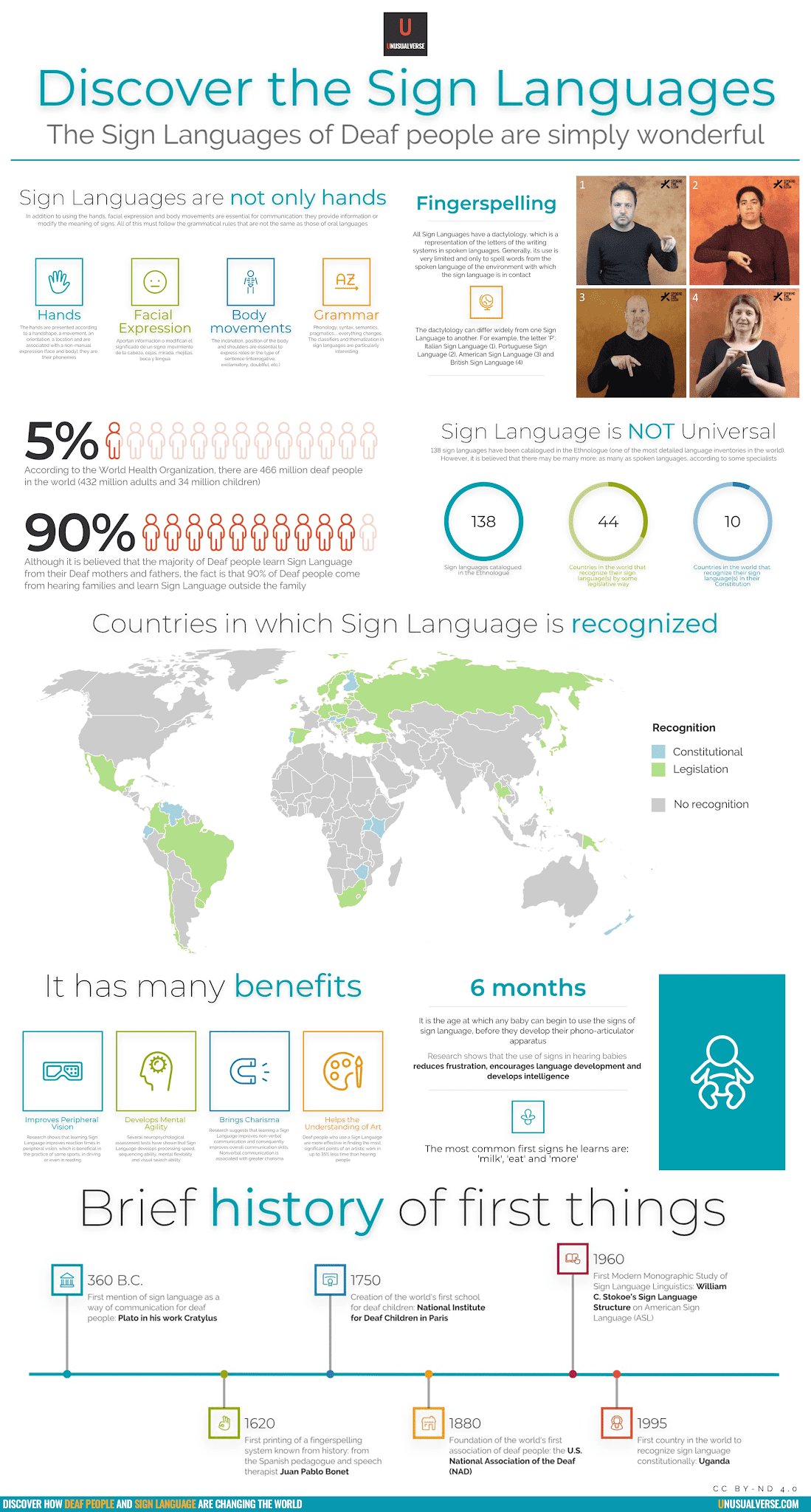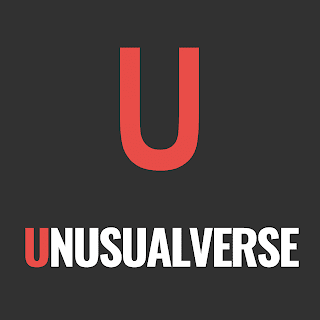The theme for 2019 is Sign Language Rights for All! and is the title of this infograph dedicated to Sign Languages. The Sign Languages of Deaf people are simply wonderful.

Sign Languages are not only hands
In addition to using the hands, facial expression and body movements are essential for communication: they provide information or modify the meaning of signs. All of this must follow the grammatical rules that are not the same as those of oral languages.- Hands: The hands are presented according to a handshape, a movement, an orientation, a location and are associated with a non-manual expression (face and body): they are their phonemes.
- Facial Expression: Provide information or modify the meaning of a sign: movement of the head, eyebrows, look, cheeks, mouth and tongue.
- Body Movements: The inclination, position of the body and shoulders are essential to express roles or the type of sentence (interrogative, exclamatory, doubtful, etc.).
- Grammar: Phonology, syntax, semantics, pragmatics,... everything changes. The classifiers and thematization in sign languages are particularly interesting.
Fingerspelling
All Sign Languages have a dactylology, which is a representation of the letters of the writing systems in spoken languages. Generally, its use is very limited and only to spell words from the spoken language of the environment with which the sign language is in contact.The dactylology can differ widely from one Sign Language to another. For example, the letter 'P': Italian Sign Language (1), Portuguese Sign Language (2), American Sign Language (3) and British Sign Language (4).
Population
5%: According to the World Health Organization, there are 466 million deaf people in the world (432 million adults and 34 million children).Although it is believed that the majority of Deaf people learn Sign Language from their Deaf mothers and fathers, the fact is that 90% of Deaf people come from hearing families and learn Sign Language outside the family.
Countries in which Sign Language is recognized
Constitutional: Austria, Ecuador, Finland, Germany, Hungary, Kenya, New Zealand, Portugal, Romania, South Africa, Uganda, Venezuela.Legislation: Belgium, Bosnia and Herzegovina, Brazil, Bulgary, Chile, Colombia, Cyprus, Czech Republic, Denmark, Estonia, Hungary, Iceland, Ireland, Italy, Japan, Latvia, Lithuania, Macedonia, Malta, Mexico, Netherlands, Norway, Papua New Guinea, Poland, Russia, Scotland, Serbia, Slovakia, Slovenia, South Korea, Spain, Sweden, Turkey, Uruguay [Update August 2023: Dominican Republic].
It has many benefits
Improves Peripheral Vision: Research shows that learning Sign Language improves reaction times in peripheral vision, which is beneficial in the practice of some sports, in driving or even in reading.Develops Mental Agility: Several neuropsychological assessment tests have shown that Sign Language develops processing speed, sequencing ability, mental flexibility and visual search ability.
Brings Charisma: Research suggests that learning a Sign Language improves non-verbal communication and consequently improves overall communication skills. Nonverbal communication is associated with greater charisma.
Helps the Understanding of Art: Deaf people who use a Sign Language are more effective in finding the most significant points of artistic work in up to 35% less time than hearing people.
6 months
It is the age at which any baby can begin to use the signs of Sign Language, before they develop their phono-articulator apparatus.Research shows that the use of signs in hearing babies reduces frustration, encourages language development and develops intelligence.
The most common first signs he learns are: 'milk', 'eat' and 'more'.
Brief history of first things
360 B.C.: First mention of sign language as a way of communication for deaf people: Plato in his work Cratylus.1620: First printing of a fingerspelling system known from history: from the Spanish pedagogue and speech therapist Juan Pablo Bonet.
1750: Creation of the world's first school for deaf children: National Institute for Deaf Children in Paris.
1880: Foundation of the world's first association of deaf people: the U.S. National Association of the Deaf (NAD).
1960: First Modern Monographic Study of Sign Language Linguistics: William C. Stokoe's Sign Language Structure on American Sign Language (ASL).
1995: First country in the world to recognize sign language constitutionally: Uganda.
You can also see all the Unusualverse infographics here.



















